This post contains affiliate links, which means I may earn money from products and services you purchase through my links.
Grooming dogs is more than just keeping them looking cute; it’s important for their health and well-being. A happy, well-groomed dog has shiny, healthy fur. Whether you’re a seasoned dog owner or new to pet care, grooming can make a huge difference.
Since there are many different types of dog fur, common issues can occur. Finding the best products and grooming tools will maintain the healthiest coat. Here, you will learn everything from bathing to brushing. Plus, find out how diet is essential in maintaining healthy fur and get some tips and tricks for that extra shine.
Understanding Your Dog’s Coat
Every dog’s coat is unique; understanding its characteristics is the first step to grooming dogs. Recognizing the type of coat your dog has helps you design a grooming routine that meets their needs.
This helps prevent common issues like matting, dandruff, and excessive shedding.
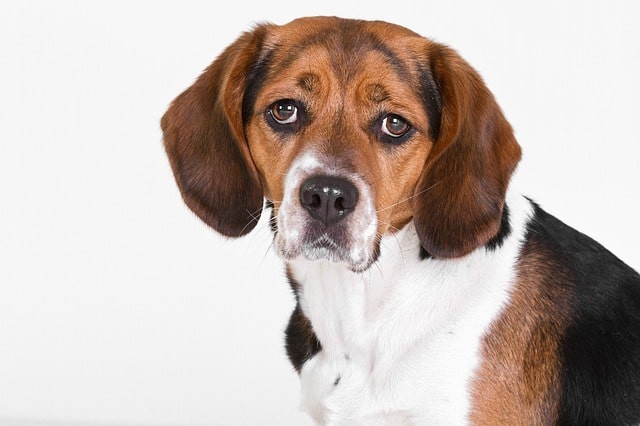
Challenges of Dog Fur when Grooming Dogs
What are the different types of fur? Knowing your dog’s coat type helps you choose the right techniques and tools for grooming dogs. This ensures your furry friend’s coat stays healthy and looks its best.
Smooth Coat: Dogs like Beagles and Boxers have short, sleek fur close to the body, requiring regular brushing to remove loose hair and distribute natural oils.
Double Coat: Double-coated dogs, like Huskies, Golden Retrievers, and German Shepherds, have dense undercoats and longer outer coats, requiring frequent grooming to prevent matting and excessive shedding.
Curly Coat: Regular brushing and trims are important for maintaining the health and manageability of curly coats in Poodles, Bichon Frises, and Portuguese Water Dogs.
Long Coat: Shih Tzus and Afghan Hounds require daily grooming to prevent tangles and mats. Use pin brushes and wide-toothed combs, and pay extra attention to areas prone to matting.
Wire Coat: Terriers have rough, bristly fur that must be hand-stripped or trimmed regularly with a stripping knife or comb. To maintain cleanliness, use a slicker brush regularly.
Common Fur Problems when Grooming Dogs
Even with regular grooming, your dog’s fur can face several common problems. Identifying and addressing these issues early ensures a healthier coat.
Matting: Matting, a common issue in long-haired and curly-coated breeds, can cause discomfort and skin issues. Regular brushing and de-matting tools can help prevent it.
Shedding: Some breeds shed more, causing hair and skin issues. Regular brushing and using a de-shedding tool can help control shedding and maintain home cleanliness.
Dandruff: Dandruff, white flakes of dead skin in dogs, can be caused by dry skin, allergies, or poor nutrition. Regular brushing and an omega-3 fatty acid diet can help promote healthy skin.
Hot Spots: Hot spots are inflamed, infected areas on your dog’s skin, often caused by scratching or licking. They can be treated by cleaning and applying an antiseptic.
Fleas and Ticks: Check your dog’s fur, especially during warm months. Use a flea comb, tick remover, and monthly preventatives to prevent infestations of fleas and ticks.
Dry Fur: Regular brushing, moisturizing shampoos, and a balanced diet with essential fatty acids can help improve the health of your dog’s dull and brittle fur.
Essential Tools for Grooming Dogs
The proper equipment for grooming dogs is needed to maintain a healthy, shiny coat. The right tools can ensure your dog’s fur stays clean and tangle-free.
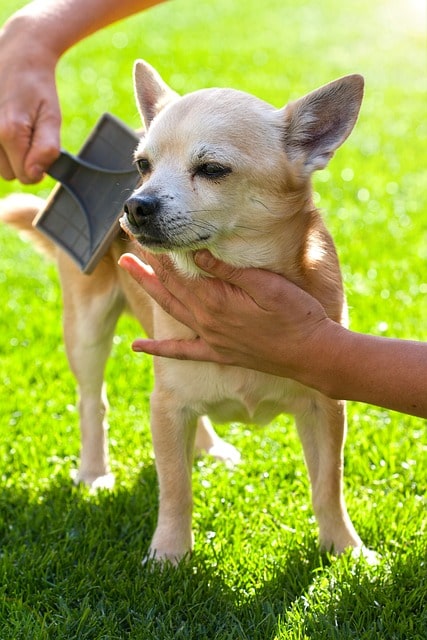
Brushes and Combs for Grooming Dogs
Choose the right brushes and combs for grooming dogs and maintaining healthy, shiny fur. Different coat types require different tools, so understanding their needs is necessary.
At one of our house sits, we used a furminator on the two medium-sized dogs. It’s an amazing brush for short and long-haired dogs and cats.
Slicker Brush: A slicker brush is ideal for dogs with long, curly, or double coats; it removes loose hair detangles fur, prevents matting, and keeps the fur smooth.
Bristle Brush: Use a bristle brush for short-haired breeds with smooth coats, removing dirt and distributing natural oils for a healthy shine and daily use.
Pin Brush: Pin brushes are great for medium to long fur, effectively detangling and removing loose hair. They work well for breeds with flowing or feathered coats, ensuring smooth and knot-free fur.
Undercoat Rake: This is a must-have tool for dogs with double coats, removing loose hair and reducing shedding, especially during shedding seasons.
Combs: Combs are essential for grooming dogs and encouraging smooth and manageable fur. Use wide-toothed combs to detangle matted fur and fine-toothed combs for removing fleas and debris.
Rubber Brush: These brushes (grooming mitts) are ideal for short, smooth coats. They gently massage the skin, remove loose hair, stimulate blood flow, and distribute shampoo and conditioner evenly during bath time.
Shampoos and Conditioners
Using appropriate shampoos and conditioners formulated for different coat types and skin needs ensures clean, vibrant fur.

Choose the Right Shampoo: Hypoallergenic or oatmeal-based shampoos soothe sensitive skin, while de-shedding shampoos reduce hair loss and strengthen fur.
Medicated Shampoos: These shampoos, containing ingredients like chlorhexidine, ketoconazole, or salicylic acid, can effectively treat skin conditions in dogs, but it’s important to consult a vet before use.
Moisturizing Shampoos: Dogs with dry or flaky skin can benefit from moisturizing shampoos. They contain aloe vera, vitamin E, and natural oils and enhance the fur’s texture and appearance.
Whitening Shampoos: White or light-coloured dogs can benefit from whitening shampoos with optical brighteners to brighten their coat’s natural colour and remove stains. Use as directed to avoid irritation.
Conditioners for Dogs: Natural oils like coconut or argan oil are excellent for maintaining a dog’s coat health and shine. They detangle fur, prevent matting, and add moisture and shine.
2-in-1 Shampoo and Conditioner: This is a convenient solution for dogs with short coats, combining cleaning and conditioning in one, saving time and ensuring optimal care.
The Perfect Grooming Routine
Routines are needed to keep your dog’s coat healthy and the best it can be.
Here, you will learn how often to bathe your dog and the best brushing techniques for different coat types. With the appropriate routine, you can make grooming a pleasant experience for you and your pet.

Bathing Frequency When Grooming Dogs
How often should you bathe your pet? Choosing the right bathing routine is necessary for grooming dogs and maintaining healthy coats. Excessive bathing can cause dryness and discomfort, while not bathing enough can lead to dirt accumulation and unpleasant odours.
General Guidelines: Dogs typically require baths every four to six weeks to maintain a clean coat. Oily breeds like Basset Hounds need baths often, while breeds with dry skin or those who don’t get dirty much can get away with longer intervals.
Coat Type Considerations: Long-haired breeds like Shih Tzus and Maltese require baths often for clean and tangle-free fur, while short-haired breeds like Dachshunds require less frequent bathing.
Activity Level and Environment: Dogs’ activity level and environment influence their bath routine, with active outdoor ones needing more baths to remove dirt and debris. If your dog is exposed to pollutants, they may need baths more often.
Special Cases: Vets may recommend specific bathing schedules for dogs with skin conditions, allergies, or health issues. Puppies with sensitive skin require gentle, puppy-formulated shampoos with less frequent baths.
Signs Your Dog Needs a Bath: Ensure your dog’s coat and skin are clean and free from dirt and debris. Bathe them if they smell, their coats feel greasy, or they scratch more than usual.
Brushing Techniques When Grooming Dogs
Proper brushing techniques are necessary for dog grooming, maintaining healthy coats, and preventing discomfort or damage to fur and skin.
Smooth and Short Coats: Gentle brushing with a soft bristle brush or rubber grooming mitt is recommended for dogs with smooth, short coats such as Beagles or Bulldogs to remove loose hair and distribute natural oils.
Double Coats: Breeds like Huskies and Golden Retrievers with double coats require special brushing. To remove loose hair, use an undercoat rake and smooth the outside coat using a slicker brush.
Curly and Long Coats: Regular brushing of curly or long coats, such as poodles or Yorkshire Terriers, is important. Use a slicker or pin brush to work through mats and tangles, especially in areas prone to matting.
Wire Coats: Terriers with wire coats require specific grooming techniques like stripping knives or combs to maintain their texture and natural look. Hand-stripping is preferred for best results.
General Brushing Tips When Grooming Dogs
Learning to brush your dog’s coat ensures their fur remains healthy, shiny, and tangle-free. Regardless of your dog’s coat type, there are general brushing tips to keep in mind:
Frequency: Brush your dog regularly, ideally a few times a week, to keep the coat clean and free of mats.
Gentleness: Be gentle while brushing, especially around sensitive areas like the ears and belly.
Check for Skin Issues: While brushing, check for signs of skin irritation, parasites, or lumps that may require veterinary attention.
Reward System: Use positive reinforcement and treats to make brushing a positive experience for your dog.
Diet and Nutrition for Healthy Fur
A well-balanced dog diet, rich in essential nutrients, is important for their overall well-being. Here we will look at how food can help dogs achieve and maintain a beautiful coat while helping you make informed decisions on meal selection and supplement use.
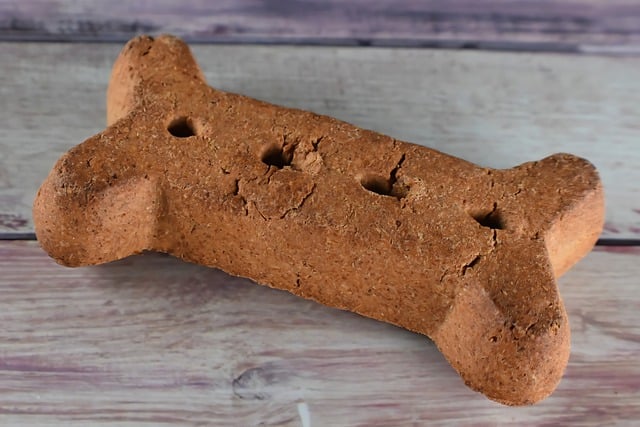
Nutrient-Rich Foods
Nutrient-rich foods for your dog promote healthy fur and shine. Consistency in providing nutrients ensures healthy, strong fur, while nutrient-rich foods promote a balanced diet.
Protein: It is the basis for a healthy coat, supporting hair growth and maintaining a strong, shiny coat. A diet containing chicken, turkey, beef, or fish is recommended.
Omega-3 Fatty Acids: These acids, found in fish oil, flaxseed oil, and salmon, are beneficial for skin and coat health. Choose omega-3 fatty acid-rich supplements or formulated dog foods.
Vitamins and Minerals: Vitamins and minerals, including vitamin E and zinc, promote healthy skin and a glossy coat. Vitamins are in almonds, sunflower seeds, and spinach. Minerals such as zinc and selenium are in meat, eggs, and whole grains.
Biotin: Biotin, a B-complex vitamin, promotes healthy skin and coat, strengthens hair, and reduces shedding. High biotin foods include liver, eggs, and sweet potatoes.
Supplements and Treats
Supplements and treats can improve a dog’s coat health and shine. They provide extra nutrients and support overall skin and fur condition.
Consult your veterinarian before introducing supplements or treats to your dog. They can recommend suitable options based on breed, age, health, and coat concerns.
Omega-3 Supplements: Fish or flaxseed oil, promotes a healthy coat by reducing inflammation, and improving skin moisture, texture and shine. They are available in liquid or capsule form and can be added to your dog’s food.
Biotin Supplements: A B-complex vitamin, biotin supplements are beneficial for coat health and shedding reduction. They support keratin production for strong and healthy hair, making them popular.
Vitamin E Supplements: This antioxidant protects cells from damage and promotes skin and coat health, elasticity, and a shiny coat in dogs. It is available in capsules and balanced multivitamin supplements.
Probiotic Treats: Probiotic treats improve a dog’s well-being by promoting gut health, nutrient absorption, and immune function. Choose live and active cultures for healthier skin and coat.
Skin and Coat Treats: Specialized treats are formulated for skin and coat health and contain omega-3 fatty acids, biotin, and antioxidants. They are a tasty way to supplement your dog’s diet while supporting their coat’s condition.
Tips and Tricks for a Shiny Coat
A dog’s coat reflects overall health and care. Techniques like shedding management and natural remedies can improve the coat, ensuring a healthy and glossy appearance.
Dealing with Shedding when Grooming Dogs
Shedding is a natural process in dogs, with breeds and seasons causing more shedding. Shedding management promotes healthy coats and a clean home.
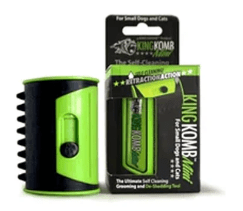
Brush Regularly: Regular brushing reduces shedding in breeds like Labrador Retrievers and German Shepherds, removing loose hair and reducing fur accumulation around the home.
Balanced Diet: A well-balanced diet rich in nutrients, omega-3 fatty acids, proteins, and fish oil supplements supports coat health and reduces shedding. Buy high-quality dog food and speak with your veterinarian for specific suggestions.
Bathing: Regular baths with de-shedding shampoo and gentle massage stimulate skin, loosen fur, and encourage hair removal. Avoid over-bathing to prevent skin dryness and shedding.
Hydration: Water is as healthy for your pets as it is for you. Maintaining a healthy coat requires regular access to clean water, which supports skin elasticity and fur texture, preventing dryness, dullness, and shedding.
Managing Stress: Stress can lead to excessive shedding in dogs. To prevent this, provide a calm, stable environment with regular exercise, mental stimulation, and calming supplements if needed.
Veterinary Check-ups: Excessive or sudden shedding in your dog may indicate health issues like allergies or hormonal imbalances. Regular veterinarian check-ups are crucial to rule out medical causes.
Home Remedies for a Shiny Coat
Achieving a beautiful, shiny coat for your dog doesn’t always require expensive products. There are home remedies to improve your dog’s coat, naturally. Some of these products may already be in your home. You may even use these products on your hair.
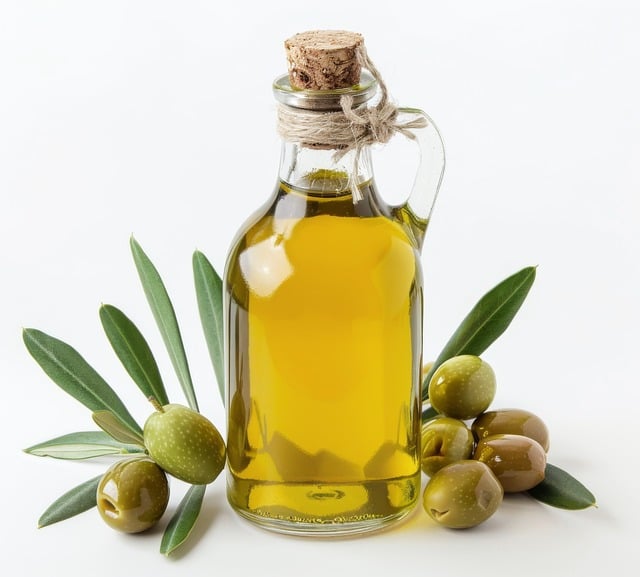
Coconut Oil: Coconut oil, rich in medium-chain fatty acids, is a natural remedy for a shiny coat, promotes skin moisture, and improves texture. Rub it into your hands and gently massage it into your dog’s fur. To get the most out of the oil, leave it on for 10-15 minutes, rinse, and shampoo.
Olive Oil: This oil is rich in omega-3 fatty acids and antioxidants and can improve your dog’s coat. Add a teaspoon daily to their food, but be cautious not to give too much, as this can cause weight gain
Apple Cider Vinegar Rinse: Mix apple cider vinegar with water to restore pH balance and promote healthy coat growth and shine. Apply once a week after shampooing, massage, leave in for a few minutes, and then rinse thoroughly.
Oatmeal Bath: Grind plain, uncooked oats into a fine powder and add them to lukewarm bathwater. Soak your dog in the oatmeal bath for 10-15 minutes, gently massaging the mixture into their fur. The oatmeal bath helps moisturize the skin and reduce irritation, promoting a healthier-looking coat.
Brewer’s Yeast: Rich in B vitamins and antioxidants, Brewer’s yeast promotes healthy skin and fur. Sprinkle a small amount over your dog’s food daily, gradually increasing if needed.
Green Tea Rinse: Because of its antioxidant properties, it can improve coat condition by reducing shedding and adding shine. Brew a strong cup of tea and cool completely. After shampooing, gently massage the tea into your dog’s fur, and let it sit for a few minutes before rinsing thoroughly with water.
Conclusion
Maintaining a healthy dog coat combines proper grooming, balanced nutrition, and occasional home remedies. Understanding your dog’s coat type, using appropriate tools, and providing a nutritious diet can significantly improve its appearance.
Regular brushing, bathing, high-quality shampoos, omega-3 fatty acid supplements, and biotin can support dog coat health and shine while promoting overall grooming.
Customize dog care practices to meet unique needs, consult a veterinarian for specialized recommendations, and schedule regular health check-ups to ensure overall well-being, including coat condition.
With these tips and tricks for grooming dogs, you can help your dog achieve and maintain a shiny, healthy coat that ensures overall comfort and happiness.

We love to travel. For our trip to Mexico, we were able to save money by house sitting, which was something completely new to us. If this is something that interests you, then check out TrustedHousesitters or HouseSitMexico (be sure and use Code thetr6210d47b7cc90 for discount). We hope you visit often.